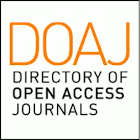INDICADORES DE ADIPOSIDAD Y SU RELACIÓN CON FACTORES DE RIESGO CARDIOVASCULAR EN HOMBRES JÓVENES
Abstract
Introducción: La obesidad es un grave problema de salud pública en México y en el mundo. La adiposidad abdominal está relacionada con las enfermedades cardiovasculares, además el tejido adiposo visceral (TAV) se ha asociado con la resistencia a la insulina, diabetes mellitus tipo 2, enfermedades cardiovasculares y con un aumento en la velocidad de onda de pulso, que es un indicador asociado a la rigidez arterial. Material y métodos: Estudio transversal, descriptivo. Participaron 40 adultos jóvenes de sexo masculino entre 21 y 32 años. Se les tomaron medidas antropométricas de adiposidad como peso y estatura para determinar el índice de masa corporal y circunferencia de cintura. Además se les midió el porcentaje total de grasa con absorciometría dual de rayos X y el tejido adiposo visceral con resonancia magnética. Se les determinó glucosa sérica, triglicéridos, colesterol, colesterol HDL y LDL. Además se les midió la presión arterial y la velocidad de onda de pulso radial-braquial. Resultados: El IMC, la circunferencia de cintura y el tejido adiposo visceral presentaron un mismo número correlaciones significativas con factores de riesgo cardiovascular. El tejido adiposo visceral fue el único que se relacionó con la velocidad de onda de pulso braquial-radial. Conclusiones: Los indicadores de adiposidad están ampliamente relacionados a los factores de riesgo cardiovascular en hombres jóvenes.
Introduction: Obesity is a severe public health problem in Mexico and around the world. Abdominal adiposity is closely related to cardiovascular disease (CVD), besides visceral adipose tissue has been associated to insulin resistance, type 2 Diabetes, CVD, also in pulse wave velocity increase; which is a related indicator to arterial stiffness. Material and methods: It is a descriptive, cross-sectional study. The participants were 40 young-adult-male aged between 21 and 32. Adiposity anthropometric measurements like weight and height were taken in order to determine the BMI and waist circumference. Besides total body, fat percentage was measured using X-ray dual absorptiometry and MRI for visceral adipose tissue; also they got determined serum glucose, triglycerides, cholesterol, HDL and LDL cholesterol. Moreover, arterial tension and radio-brachial pulse wave velocity were taken too. Results: BMI, waist circumference and visceral adipose tissue showed equal number of significative correlation with cardiovascular risk factors. Visceral adipose tissue was the only item related to radio-brachial pulse wave velocity. Conclusions: Adiposity indicators are strongly related to cardiovascular disease in young men.
Palabras claves: Adiposidad, tejido adiposo visceral, factores de riesgo cardiovascular, adiposity, visceral adipose tissue, cardiovascular risk factorsDownloads
Downloads
Published
How to Cite
Issue
Section
License
The rights of the work belong to the author or authors, however, by sending it for publication in the Public Health and Nutrition Magazine of the Faculty of Public Health and Nutrition of the Autonomous University of Nuevo León, they grant the right for its first publication in between electronic, and possibly, in print to the Public Health and Nutrition Magazine. The license used is the Creative Commons attribution, which allows third parties to use what is published whenever the authorship of the work is mentioned and the first publication that is in the Public Health and Nutrition Magazine. Likewise, the author or authors will take into account that it will not be allowed to send the publication to any other journal, regardless of the format. The authors will be able to make other independent and additional contractual agreements for the non-exclusive distribution of the version of the article published in the Public Health and Nutrition Magazine (e.g., institutional repository or publication in a book) provided they clearly state that The work was published for the first time in the Public Health Magazine, Magazine of the Faculty of Public Health and Nutrition of the Autonomous University of Nuevo León.










